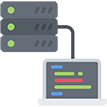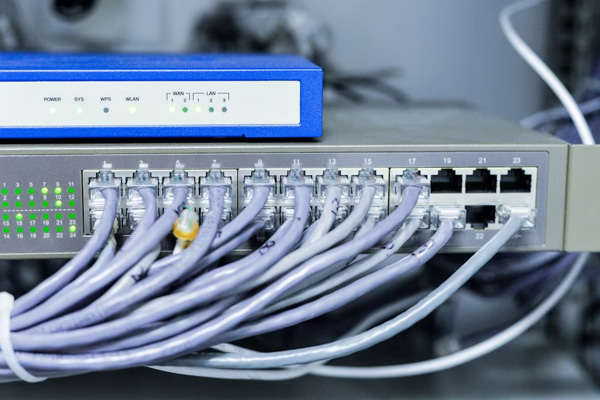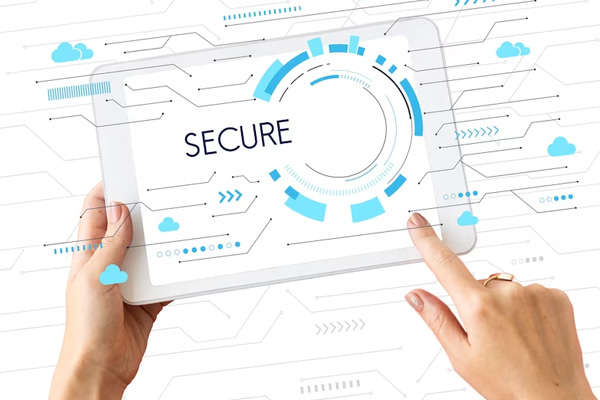
 Cloud & Server Management
Cloud & Server Management Cloud and server management refers to the process of managing, maintaining, and optimizing the performance of cloud-based and traditional on-premise server infrastructure. This includes tasks such as configuring, monitoring, and updating servers, as well as ensuring their security and reliability. Provide prospective auditing, risk, and compliance professionals who are involved in assessing regulated workloads in the cloud.
Proper analysis and mapping of where issues and opportunities are located in the broader IT stack and evaluating how effectively they may be tackled.
Cloud migration: Moving existing applications, data, and infrastructure from an on-premise environment to a cloud-based environment.
Server administration: Managing the day-to-day operations of servers, including software updates, security patches, and backups.
Disaster recovery: Implementing and testing disaster recovery plans to ensure that data and applications are protected in the event of a failure.
Load balancing: Distributing traffic across multiple servers to ensure that the workload is evenly distributed and that the application is always available and responsive.
Security management: Implementing and maintaining security measures to protect against cyber threats and unauthorized access to sensitive data.


Mail services and management refers to the process of managing and maintaining email systems, including the hardware and software components, as well as the configuration and security of the email infrastructure. This can include services such as email hosting, email archiving, and email security.
Some common types of mail services and management include:
Email hosting: Providing a hosting service for email servers and email clients, typically through a third-party provider.
Email archiving: Storing email messages in a secure, centralized repository for long-term retention and retrieval.
Email security: Implementing measures to protect against email-borne threats, such as malware, spam, and phishing attacks.
Domain service and management refers to the process of registering, maintaining, and managing the ownership of a domain name. A domain name is a unique identifier for a website and is used to create a human-readable address for a website (e.g. www.example.com).
Some common types of domain service and management include:
Domain registration: Registering a unique domain name for a website, which is typically done through a domain registrar.
Domain renewal: Renewing the registration of a domain name to ensure that it remains active and registered to the owner.
Domain transfer: Transferring the ownership of a domain name from one registrant to another.
Domain privacy: Protecting the personal information of the registrant, such as name, address, and email, that is publicly available in the WHOIS database.


Firewall security solutions and management refer to the processes and technologies used to secure a network from unauthorized access, threats, and attacks. A firewall is a network security system that monitors and controls incoming and outgoing network traffic based on predetermined security rules.
Some common features of firewall security solutions include:
Traffic filtering: Allowing or blocking specific types of network traffic based on rules and policies set by the administrator.
Intrusion prevention: Detecting and preventing potential threats and attacks, such as malware, viruses, and hackers.
VPN (Virtual Private Network) support: Allowing remote users to securely access the network through a secure, encrypted connection.
Reporting and logging: Providing detailed logs and reports on network activity and security incidents.
Corporate antivirus security solutions are designed to protect large organizations and enterprises from the risks posed by malware, viruses, and other malicious software. These solutions typically have more advanced features and greater scalability than consumer-grade antivirus solutions, to meet the needs of large, complex organizations.
Some common features of corporate antivirus security solutions include:
Centralized management: The ability to manage antivirus software and policies from a central location, making it easier to manage and update security measures across the entire organization.
Advanced threat detection: Advanced threat detection technologies, such as machine learning and artificial intelligence, to identify and stop even the most sophisticated threats.
Network-level protection: The ability to protect not just individual devices, but the entire network, including servers, workstations, and other connected devices.
Customizable policies: The ability to create and implement custom security policies, to meet the specific needs and requirements of the organization.
Compliance reporting: The ability to generate detailed reports on security incidents, to help organizations meet compliance requirements and demonstrate their commitment to security.


IT audit and consulting refers to the process of evaluating and improving the technology systems and processes used by an organization. IT audits help organizations identify potential risks and vulnerabilities in their technology infrastructure, and provide recommendations for improving the efficiency, security, and compliance of these systems.
IT consulting services typically involve working with an organization to identify areas where technology can be used to improve business operations and achieve strategic goals. This may involve providing recommendations for implementing new technologies, improving existing systems, or optimizing technology use across the organization.
IT audit and consulting services typically include:
Risk assessment: Evaluating an organization's technology systems to identify potential risks and vulnerabilities, and providing recommendations for reducing these risks.
Technology infrastructure analysis: Assessing an organization's technology infrastructure, including hardware, software, networks, and other systems, to identify areas for improvement.
Compliance review: Ensuring that an organization's technology systems comply with industry regulations and standards, such as data protection and privacy laws.
Security audit: Evaluating an organization's security measures, including firewalls, antivirus software, and network security protocols, to identify potential weaknesses and provide recommendations for improvement.
Strategic planning: Working with an organization to identify technology goals and objectives, and developing a roadmap for achieving these goals.